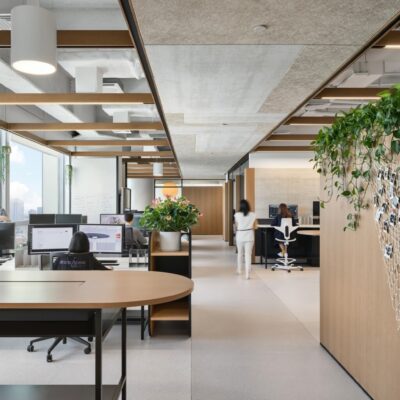At Archie, we’ve been diving deep into product research and realized something: exploring different coworking space solutions is exciting — until you decide to switch and face the challenge of coworking software migration.
Switching software, no matter how great the other tool seems, takes time and effort, and sometimes (pretty high) setup fees. So, is it really worth it?
Here’s when migrating to different coworking software makes sense and how you can go about it.
Guide to coworking software migration
Reasons why you might want to migrate coworking software
The overall user experience is pretty bad
Are you and your members feeling fed up with a clunky, unreliable system? Maybe the software crashes, logs you out for no reason, or just makes easy things way too hard. And if the support team is slow to respond or not much help, it only adds to the frustration.
Well, these problems aren’t just frustrating — they can hit your wallet, too. Slow software and unhelpful support can lead to missed bookings, unhappy members, and lost income. If the great customer service you were promised disappeared after you signed up, it might be time to ask yourself if this software still works for your business. Maybe it did once, but not anymore.
The available features are quite limiting
Does your current software fall short when it comes to your daily needs? If it’s getting in the way of improving daily operations, offering new services, or making more profit, it could be holding your coworking business back.
The right software should adapt to your business needs, not the other way around. If it’s creating more problems than it solves, it could be time to look for something better.
The costs just don’t add up
Most coworking software platforms use one (or a mix) of the following pricing models:
- User-based pricing: You’re charged based on how many members are using the software. There’s usually a minimum monthly fee that covers a certain number of users, and the price goes up as your user count grows. Just make sure you understand what counts as an “active user” so you’re not paying for people who aren’t actually using the platform.
- Location-based pricing: If you manage multiple spaces, some tools charge more to reflect that extra complexity. For example, managing 100 members in one space will typically cost less than managing 100 members across three locations.
- Feature-based pricing: Here, the price depends on the tools you need, regardless of how many members you have. For example, adding a white-labeled coworking app might cost an extra $99/month, whether you have 50 members or 500.
Understanding these models will help you choose a plan that fits your budget and business goals. And as your space grows or changes, don’t be afraid to re-evaluate. If, at any point, it feels like you’re paying too much, it might be time to explore other options.
Common objections to coworking software migration
So, do any of these issues sound familiar? You’re not alone. Switching coworking software might seem problematic, but hanging on to a tool that no longer works for you could end up costing you more over time.
The good news is, it’s not as scary as it seems. Let’s walk through some common worries and how to handle them:
1. “I don’t have time for a coworking software migration.”
A lot of coworking operators feel too swamped to even think about switching software. With admin tasks piling up and no budget for extra help, a migration feels out of reach. But here’s the thing…
Those day-to-day struggles are often caused by coworking software. If your current system is clunky, slow, or just doesn’t do what you need, it’s probably creating more work than it saves. Switching to a better platform can actually free up your time by simplifying your processes and automating the repetitive stuff.
2. “Exporting and importing data sounds like a nightmare.”
Migrating to new coworking software can feel overwhelming at first, especially if you think about migrating data. In reality, things like bulk uploading member info or payment details can be done quickly, especially with the help of built-in tools and support from the new provider.
For example, you don’t have to update payment details if you continue using the same integration to handle payments (like GoCardless or Stripe).
Worried about connecting a new tool to your current coworking tech stack? Don’t stress. Most modern coworking platforms offer third-party integrations (either built-in or through tools like Zapier), which can make your new setup even easier than the one you’re replacing.
3. “Migrating coworking software is going to cost a fortune.”
Not necessarily! Some coworking software providers include setup for free, and others offer migration help at a fair price. Even if there’s a small upfront cost, the time and stress you’ll save by switching to a better tool often pays off, especially if the new platform ends up being more affordable in the long run.
4. “I’m worried about losing members during the transition.”
It’s totally normal to worry that switching software might cause issues or annoy your members, especially if you’ve heard stories of messy migrations. But most coworking software providers are here to make the process smooth. For example, with Archie, we can import all your existing member info, so all your members need to do is log in and download the new app.
Try to focus on the bigger picture: better coworking management software means easier workflows for your team and a smoother experience for your members. Let them know how the change will help them, and get them excited about what’s coming.
A little clear communication goes a long way. To help everyone adjust, share easy step-by-step instructions and consider using small rewards or fun perks to encourage participation. We’ll get into some ideas for that soon.
What’s involved in coworking software migration (and how to prepare for it)
Switching coworking software means moving all your important data, like member info, payments, bookings, and plans, from your old system to the new one.
Because every platform organizes data a bit differently, the migration process can vary depending on which tools you’re switching from and to. That’s why it’s a good idea to ask your new provider what their process looks like and what kind of support they offer.
For example, at Archie, we can handle the whole coworking software migration for you. We’ll move everything, from floor plans and office resources to user profiles and third-party integrations, so you can focus on running your space.
Here’s what the typical coworking software migration process looks like:
1. Preparing your data for migration
To make your migration go smoothly, start by exporting all this data from your current software:
- Membership details – Names, contact info, and which membership plan each person is on.
- Workspaces and resources – A list of all the desks, meeting rooms, and equipment available for booking.
- Billing plans – Pricing details, payment methods, and invoicing setup.
- Third-party integrations – Any connected tools like calendars, door access systems, or accounting software.
2. Uploading your data and setting up the new platform
Once your data is ready, it’s time to configure the new platform. Here’s what you’ll need to set up:
- Members – You can upload all your member info using a CSV file (way easier than adding them one by one). Here’s how straightforward it is to import accounts from a CSV to Archie, for example.
- Billing information – Add your billing address, set up how and when invoices are created, and connect your preferred payment methods.
- Space layout – Map out your space in the system, including desks, rooms, private offices, and any rentable equipment. You can also set availability and layouts for easier bookings.
- Membership plans – Create your pricing plans, services, day passes, and any other offerings you want members to access.
If you’re using Archie, our team walks you through all of this in two personalized onboarding sessions, so you’re never left figuring it out alone. Plus, you’ll find clear how-to guides in the Archie Help Center to help you get started.
3. Migrating integrations
Native integrations help your coworking software connect smoothly with the other tools you and your members use every day, like calendars, door access, accounting systems, or printers. The best part? You won’t need to re-enter things like payment info or access codes if you’re using the same tools — you just reconnect them.
Most coworking platforms include a good range of built-in integrations. For example, Archie works with popular tools right out of the box, and also connects to many others through Zapier. If you need something more custom, that’s possible too (though it might come with an extra cost).
4. Helping your members get started with the new app
Now that you’ve made the switch to a new coworking software, it’s time to bring your members along for the ride. The new app should let them book desks and rooms, check events, and connect with others through the member directory.
Here’s how to make the transition easy for everyone:
- Give clear instructions: Make it easy for members to get started. Put up printed signs with QR codes around your space so they can quickly download the app. Share the download link in emails, newsletters, and on your website. Let them know that most things — like billing, chatting with staff, and networking — will stay the same. They’ll just be doing it all through the new app.
- Focus on the benefits: Help members see the upgrade as a good thing. Point out what’s better, like easier room bookings, more payment options, or smoother ways to connect with the community. If there were common complaints about the old system, show how this one solves them!
- Plan ahead for billing: To avoid confusion or double charges, aim to switch software at least two weeks before your next billing cycle. Let members know future invoices will come from the new system, but everything else will work the same on their end.
Speaking of planning, plan for about one to two months to fully switch over. That gives you time to set things up, make adjustments, and help members get used to the new system.
In most cases, your members won’t need to do much to adapt to the change. All they’ll need to do is download the new app and save a new URL. Typically, coworking space operators get their members using the new system within just a few days after announcing the migration.
Migrate from your coworking software to Archie
I have used a more legacy solution before, which was more expensive and surprisingly not that great, especially from a user perspective.
At Archie, we make switching coworking software as easy as possible by taking care of the tricky parts for you. Our team will handle everything, from moving your floor plans and office resources to importing member data and connecting your existing tools.
Need a custom integration? No problem, we can take care of that too! In some cases, there might be a fee for custom development, depending on your current setup. But it means our engineers do the heavy lifting, so you don’t have to — and we’re always upfront and transparent about the cost.
With Archie, your coworking software migration is in expert hands. You can focus on running your space while we make sure everything moves over smoothly.

Berenika Teter
Archie's Content Manager, fueled by filter coffee and a love for remote work. When she’s not writing about coworking spaces and hybrid workplaces, you can probably find her exploring one.






















![The Latest Coworking Statistics & Industry Trends [2026] A cozy coworking space with wooden walls, warm lighting, and a large map of South America.](https://archieapp.co/blog/wp-content/uploads/2025/08/Latest-coworking-statistics-cover-image-400x400.jpg)

![How To Start a Coworking Space: Costs and Plan [2026 Guide] A modern coworking space with white desks, ergonomic chairs, and laptops.](https://archieapp.co/blog/wp-content/uploads/2023/11/Screen-Shot-2023-11-30-at-9.33.09-AM-400x400.png)
